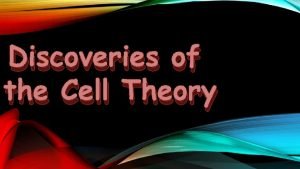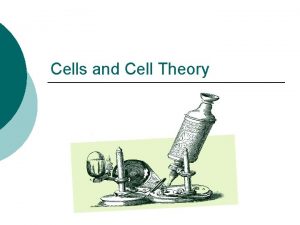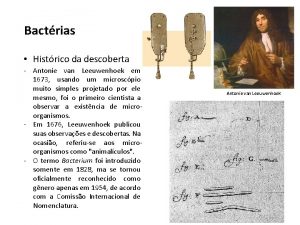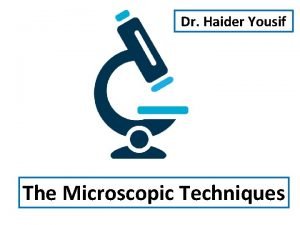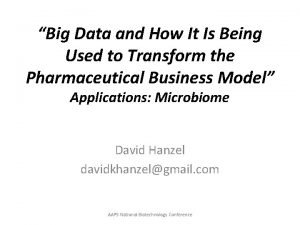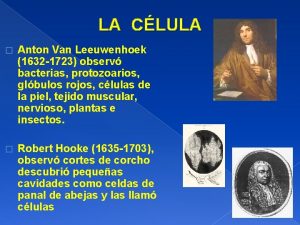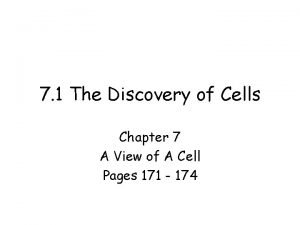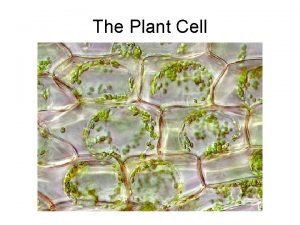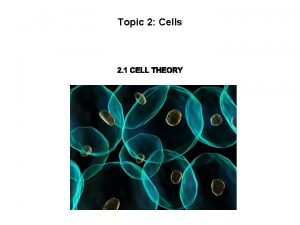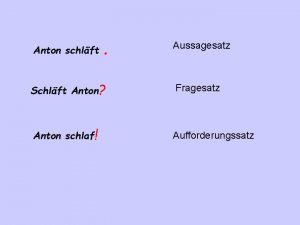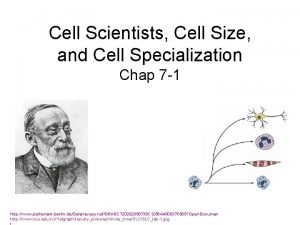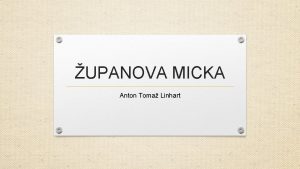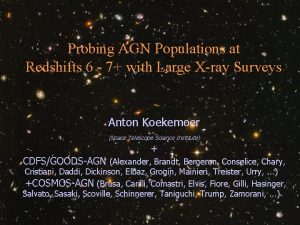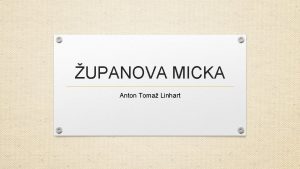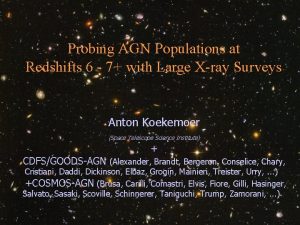Cell scientists outline II Scientists 1 Anton van

















- Slides: 17


Cell scientists outline II. Scientists 1. Anton van Leeuwenhoek 2. Robert Hooke 3. Matthias Schleiden 4. Theodore Schwann II. 3 parts of cell theory III. Vocabulary 1. All cells have: 2. organelle: 3. prokaryote ex. 4. eukaryote ex.

The History of the Cell Theory • Before microscopes--people believed that diseases were caused by curses and supernatural spirits • Microscopes enabled scientists--to view and study cells

Development of Light Microscopes • Simple light microscope--contains one lens and uses light to view objects • Anton van Leeuwenhoek—developed first microscope (single lens), observed pond organisms

Development of Light Microscopes Compound light microscopes – Uses a series of lenses to magnify objects in steps, can magnify up to 1500 X.

Development of Electron Microscopes Electron microscope--Uses a beam of electrons instead of light to magnify structures up to 500, 000 x - Specimens must be dead to observe under an electron microscope

The Cell Theory • Robert Hooke--Used compound light microscope to study cells in cork. • Hooke observed--small shapes he named cells after rooms in a monastery

The Cell Theory Cell--The basic units of all living organisms

The Cell Theory Matthias Schleiden--Concluded that all plants are made of cells Theodor Schwann--Concluded that all animals are made of cells

• Rudolph Virchow stated that new cells can be produced only from the division of existing cells (preexisting cells)

Cell theory--developed by discoveries of Hooke, Schleiden, and Schwann All organisms are composed of one or more cells. The cell is the basic unit of structure and organization of organisms. All cells come from pre-existing cells.

• Cells come in a variety of shapes and sizes. ALL CELLS: 1. Are surrounded by a cell membrane 2. Contain DNA at some point in their lives

Microscopes With better microscopes--scientists observed that all cells contain specialized structures called organelles Organelles--Mostly membrane bound structures that have specific functions inside the cell

Two Basic Cell Types Prokaryotic cells--Cells that do not contain a nucleus or other internal membrane-bound organelles Click here Examples of prokaryotes--Bacteria

7. 1 Two Basic Cell Types Eukaryotic cells--Cells that contain a nucleus and other membrane-bound organelles Click here • Examples of eukaryotes --plants and animals

A prokaryotic cell does not have internal organelles surrounded by a membrane. Most of a prokaryote’s metabolism takes place in the cytoplasm. 2. DNA 1. Ribosomes Click here to return to chapter summary 3. Plasma membrane 4. Cell wall

This eukaryotic cell from an animal has distinct membrane-bound organelles that allow different parts of the cell to perform different functions. 1. Nucleus 2. Nucleolus 3. Chromosomes 4. Plasma membrane Click here to return to chapter summary 5. Organelles
 Anton van leeuwenhoek cell theory
Anton van leeuwenhoek cell theory Anton van leeuwenhoek cell theory
Anton van leeuwenhoek cell theory Anton van leeuwenhoek cell theory 1673
Anton van leeuwenhoek cell theory 1673 Anton van der ven
Anton van der ven 1673 anton van leeuwenhoek
1673 anton van leeuwenhoek Anton van leeuwenhoek
Anton van leeuwenhoek Leeuwenhoek
Leeuwenhoek Anton van leeuwenhoek célula
Anton van leeuwenhoek célula Luisa olivera
Luisa olivera Anton ven leeuwenhoek
Anton ven leeuwenhoek Anton van leeuwenhoek accomplishments
Anton van leeuwenhoek accomplishments Robert hooke plant cell
Robert hooke plant cell What is sentence outline
What is sentence outline Venn diagram animal and plant cells
Venn diagram animal and plant cells Outline the cell theory
Outline the cell theory Cell city worksheet
Cell city worksheet Advantages and disadvantages of diaphragm cell process
Advantages and disadvantages of diaphragm cell process Site:slidetodoc.com
Site:slidetodoc.com
